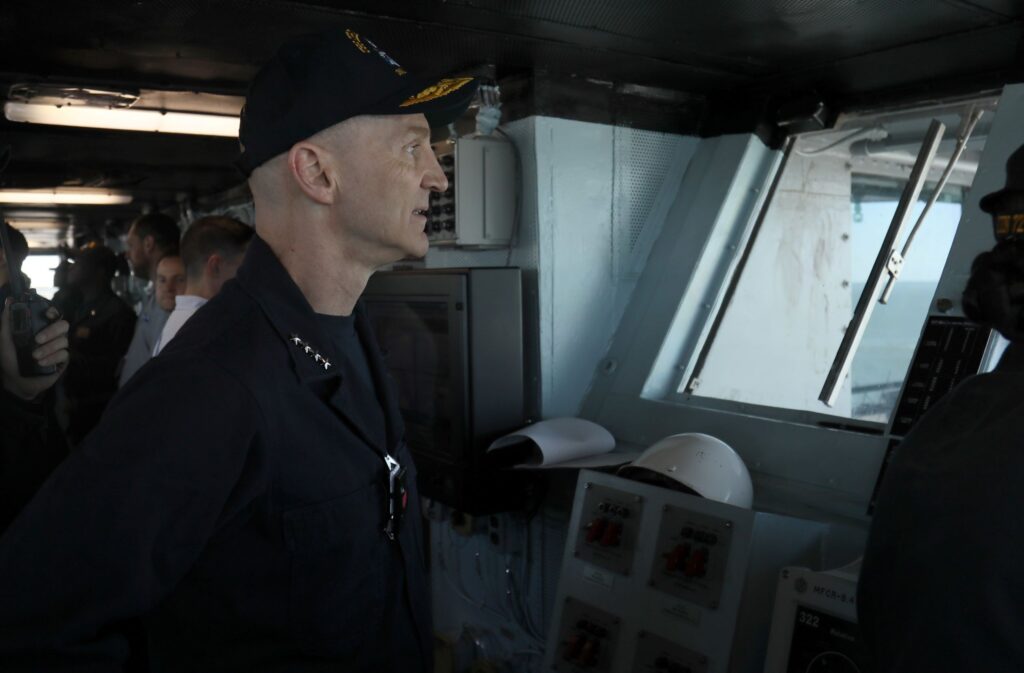
ARLINGTON, Va. — The director of the U.S. Navy’s Nuclear Propulsion Program told an audience of active-duty and retired submariners that the current era of great power competition is highly demanding of the submarine force but is an exciting time as the challenges are met.
“Our submarines are consistently in high demand,” said Adm. Frank Caldwell, director, Navy Nuclear Propulsion Program, speaking Nov. 17 at the Naval Submarine League’s annual symposium in Arlington. “We are always improving our game, our team, our platforms. … It’s a great time to be a submariner.”
Caldwell noted that while the United States faced a formidable adversary during the Cold War — the Soviet Union — it now faces two nuclear-capable competitors: Russia and China. He said that the U.S. Navy’s attack submarines and guided missiles are deployed forward daily.
He especially praised the wisdom of the conversion of four Ohio-class ballistic-missile submarines (SSBNs) into guided-missile submarines (SSGNs), each able to deploy with up to 154 Tomahawk cruise missiles and with special operations forces.
“We can’t keep these platforms at sea enough,” he said of the Ohio-class SSGNs, calling their development in the 2000s a “monumental decision.”
The SSGNs are slated for retirement in the mid-2020s, and their missile capacity will be replaced by Block V Virginia-class submarines equipped with the Virginia Payload Module.
Caldwell noted the new strike weapons entering the submarine force’s arsenal in the next few years, including the Maritime Strike Tomahawk, the Conventional Prompt Strike hypersonic weapon, and the return of the submarine-launched Harpoon cruise missile.
Seabed warfare also is a capability being sought by the submarine force, he said, with an emphasis on unmanned vehicles.
Caldwell said the submarine force is focusing on all methods of transferring data on and off the ship to be networked with the fleet, including incorporating machine learning and artificial intelligence, to enable faster decision-making.
“Just as we pursue acoustic superiority, we are pursuing decision superiority,” he said.
He also noted that the United States currently is building submarines at the highest rate since the 1990s.
Electric drive will be returning to the submarine force with the Columbia-class SSBN. Caldwell said that every electric drive train bound for a Columbia-class SSBN will be thoroughly tested at a land-based test site in Philadelphia and then shipped to Electric Boat in Groton, Connecticut for installation in their respective hulls.
Caldwell briefly addressed the recent AUKUS agreement between Australia, the United States and the United Kingdom, which plans to build a nuclear-powered submarine force for Australia.
The U.S. Navy stands ready to support the historic announcement, but Caldwell stressed the importance of wise stewardship, looking at various options, and the importance of trust in the endeavor. He also said the Navy must be sure not to let AUKUS slow its own efforts.
“We have an already busy enterprise,” he said, noting that it is important for the Navy to remain focused.
- SECNAV Advocates Increased Legal Immigration to Increase Shipbuilder Workforce - April 23, 2024
- Insitu Going Strong at 30, Focusing on Maritime Operations - April 8, 2024
- Navy Awards Boeing Additional Funds for MQ-25 Drones for Testing - April 3, 2024






